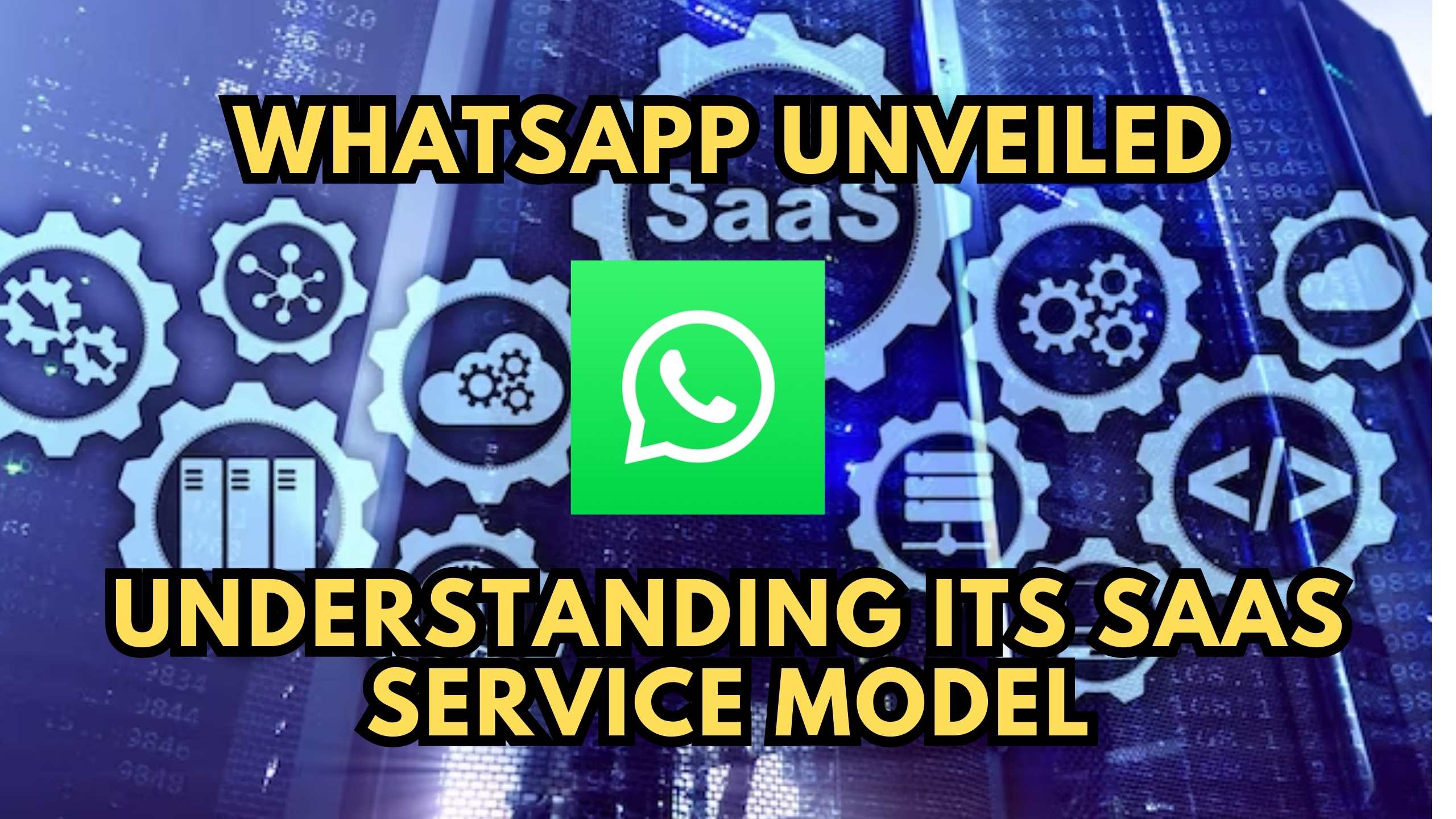WhatsApp Unveiled: Understanding its SaaS Service Model
-


WhatsApp Unveiled: Understanding its SaaS Service Model
In the realm of instant messaging, WhatsApp has emerged as a global juggernaut, connecting billions of users through its seamless communication platform. As the popularity of WhatsApp continues to soar, questions arise regarding its classification as a Software as a Service (SaaS) product. Let’s delve into the intricacies of WhatsApp’s service model and explore the factors that contribute to its standing in the SaaS landscape.
WhatsApp’s Communication Infrastructure
WhatsApp’s core functionality revolves around real-time messaging, voice calls, and multimedia sharing. While these features align with the principles of SaaS, where software is centrally hosted and provided over the internet, WhatsApp primarily operates as a standalone application on users’ devices. Unlike traditional SaaS models, where services are accessed through a web browser, WhatsApp’s service is more app-centric, blurring the lines between pure SaaS and standalone applications.
Monetization Strategies and Business Accounts
WhatsApp’s approach to monetization introduces an interesting dynamic. While it was initially offered as a free service, the platform introduced business accounts and the WhatsApp Business API. These tools enable businesses to interact with customers at scale, offering services such as automated messaging and customer support. This business-oriented functionality aligns more closely with the conventional SaaS model, as it provides businesses with a subscription-based platform for enhanced communication and customer engagement.
SaaS Products for Enhanced Communication:
- Slack: Slack, a team collaboration tool, is widely adopted for its seamless communication features. Consequently, it stands out as a SaaS product that enhances workplace efficiency through organized channels, file sharing, and integrations.
- Microsoft Teams: Microsoft Teams, an integral part of Microsoft 365, offers a comprehensive platform for team collaboration, combining chat, video meetings, file storage, and application integration.
- Zoom: As a leading video conferencing tool, Zoom has become indispensable for remote collaboration. In addition, its SaaS model facilitates virtual meetings, webinars, and online communication.
- Trello: Trello, a project management tool, exemplifies SaaS by providing a visual platform for task organization and collaboration. It enhances team communication and project coordination.
- Asana: Asana, another prominent project management tool, streamlines team collaboration and task management. Its SaaS features contribute to efficient project planning and execution.
Conclusion
While WhatsApp’s primary function as a messaging app might not fit the traditional SaaS mold, its introduction of business-centric features adds a layer of SaaS-like characteristics. The evolution of WhatsApp, with a focus on enhancing business communication, showcases its adaptability in catering to diverse user needs. As the messaging landscape continues to evolve, WhatsApp’s role in the SaaS arena remains dynamic and worth monitoring.
Ready to Elevate Your Communication?
Explore exclusive deals and enhance your communication toolkit with Subscribed.fyi. Sign up today to unlock savings on essential tools, effortlessly manage your subscriptions, and navigate the complexities of the SaaS landscape.
Relevant Links:





